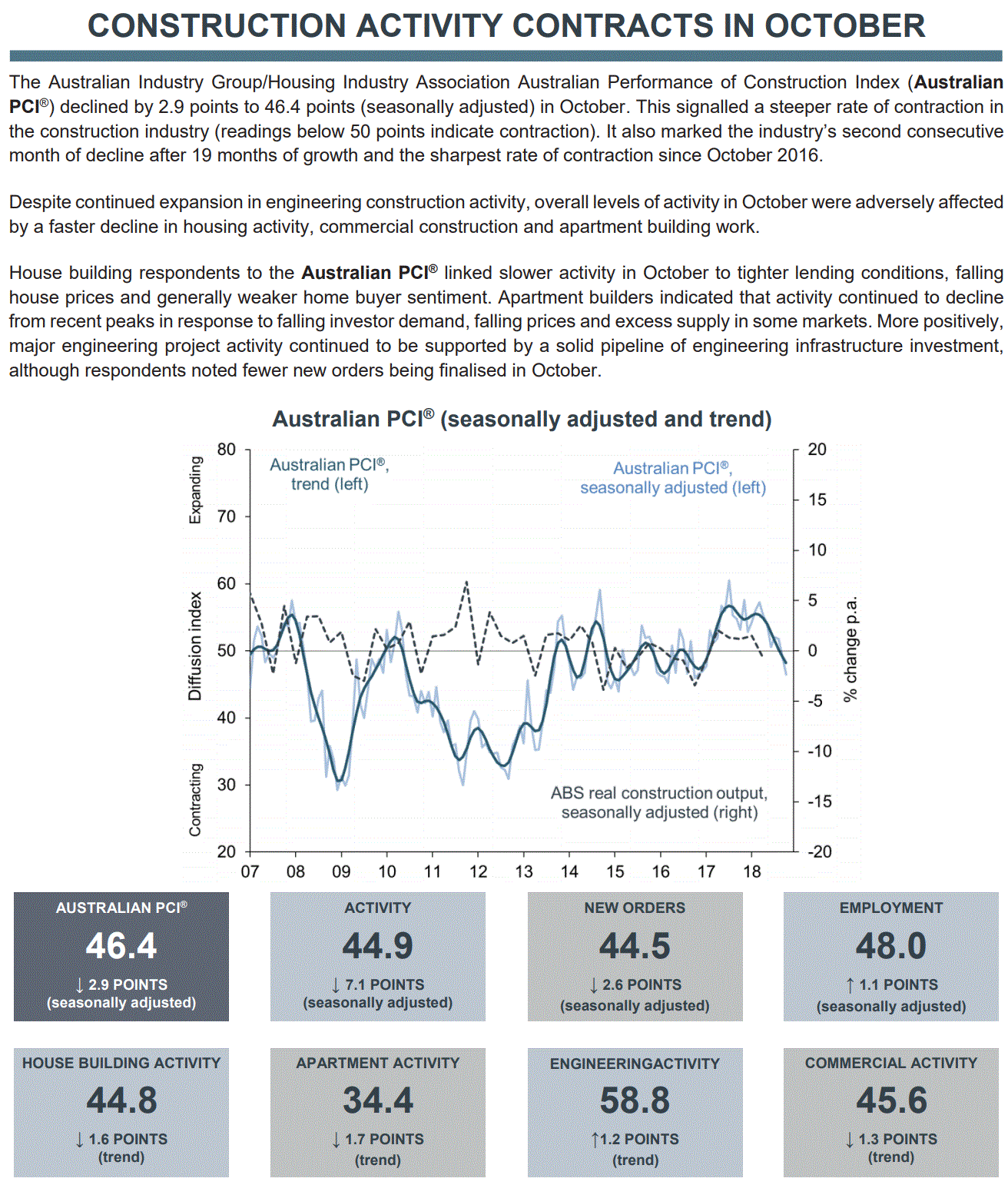Into contraction we go:

More:
Construction sectors: Engineering construction (55.0 points seasonally adjusted and 58.8 points trend) was the strongest sector of the construction industry in October due to a solid pipeline of public-sector investment in large-scale infrastructure projects. However, its rate of growth moderated from the more robust conditions recorded in September, with reports of an easing in new tendering opportunities. Commercial construction (43.7 points seasonally adjusted and 45.6 points trend) was more subdued, falling further into contraction with a fourth consecutive month of decline. In the residential construction sectors, house building (45.7 points seasonally adjusted and 44.8 points trend) contracted for a third month (albeit at a slower rate) while apartment building (29.6 points seasonally adjusted and 34.4 points trend) fell for an eighth consecutive month and at the sharpest rate in six years.
Construction prices and wages: Input price inflation in the Australian PCI® remained elevated in October. The input prices index fell by 3.7 points to 72.4 points, indicating that cost pressures eased during the month but remained significant, due to robust demand for construction materials, elevated energy input costs and price hikes for oil (i.e. petrol) and other commodities. The selling prices index in the Australian PCI® decreased by 6.3 points to 44.3 points in October, highlighting the strong competition between builders which is pushing down construction selling prices. The ongoing gap between these price series in the Australian PCI® indicates that profit margins remain tight for businesses in the construction industry.
Construction activity: Across the whole construction industry, activity (44.9 points) contracted sharply in October after moving into mild positive territory (i.e. above 50 points) in September. This weakening in activity was associated with a more pronounced reduction in new orders (44.5 points) while the supplier delivery index fell by 1.5 points in October to 50.9 points, indicating roughly stable delivery levels compared to the previous month. Employment contracted for a third consecutive month, albeit a slower rate, with the employment index increasing by 1.1 points to 48.0 points.
Construction highlights: Survey respondents in the engineering sector continue to highlight significant growth impetus coming from non-mining infrastructure (albeit at a slowing rate). For them, the negative impact of falling mining investment has largely faded. Across the residential construction sectors, the influence of declining activity after recent peaks is having an increasingly negative impact on overall industry conditions. Commercial construction activity remains relatively muted.
Construction concerns: Many respondents are indicating that cost pressures in the construction of building projects remain high due to robust demand for construction materials and elevated energy input costs. Reports are rising about difficulties in filling skilled vacancies. These pressures are testing the capacity of the industry to effectively bid for new work.
I wouldn’t worry about cost pressures. They’re going to fade away with activity as resi goes bust. Unless you work at the RBA!
Full report.

